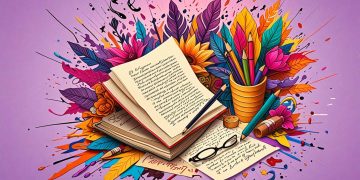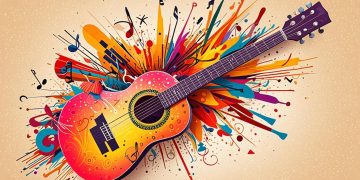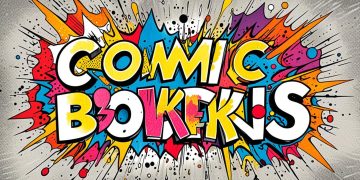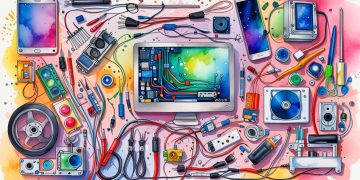
Writing Microstories: The Art of Telling Stories in Few Words
Mastering the art of writing microstories enables authors to convey profound narratives in a few words, engaging audiences through rich imagery and emotional depth. By focusing on concise language and relatable experiences, writers can transform simple moments into impactful tales, resonating with readers across diverse backgrounds.

The Power of Poetry: How Writing Poems Can Enrich Your Creative Hobbies
Poetry enriches creative hobbies by enhancing emotional expression, improving language skills, and fostering community connections. It serves as a powerful tool for self-discovery and social commentary, allowing writers to engage deeply with their experiences while inspiring personal and artistic growth in diverse cultural contexts.

Interactive Narratives: The Writing of Games and Participatory Stories
Interactive narratives blend storytelling and technology, transforming audiences into active participants. This evolution, seen in video games and participatory stories, enhances engagement through character development, branching storylines, and player agency. By reflecting local cultures and utilizing advanced technologies, these narratives celebrate cultural identities and foster deeper connections.

Writing Music Lyrics: Creativity in Song Composition and Its Cultural Impacts
The exploration of Nigerian music lyrics highlights their role as cultural expressions, addressing sociopolitical themes, love, and spiritual beliefs. Through creative lyric writing, artists forge connections, inspire change, and preserve cultural heritage, showcasing the profound impact of song composition on society and creativity in music.

DIY Natural Beauty: Creating Personal Care Products with Homemade Ingredients
Explore the enriching world of DIY natural beauty, where homemade personal care products harness the power of safe, sustainable ingredients. Learn to create customized skincare solutions using local resources like shea butter and honey, while promoting health, creativity, and environmental consciousness in your beauty routine.

Comics: The Combination of Text and Image as a Form of Creativity
Comics merge text and image to create engaging narratives that resonate widely. They explore complex themes, cultural identity, and social commentary, particularly in Nigeria's evolving comic scene. This medium fosters creativity and collaboration, inviting readers to connect with diverse stories while reflecting local traditions and contemporary issues.

Writing for Childhood: The Magic of Tales and Fables for Children
Storytelling captivates children's imaginations while fostering creativity, emotional intelligence, and cultural connections. Tales and fables, particularly from rich traditions like Nigerian folklore, impart valuable life lessons and enhance vocabulary. Embracing these narratives nurtures young minds and strengthens family bonds, ensuring the enduring magic of storytelling continues to thrive.

Creative Gardening: DIY Projects to Grow Herbs and Plants in Small Spaces
Urban gardening offers an inspiring way to cultivate herbs and plants in limited spaces, fostering sustainability and creativity. Through innovative DIY projects like vertical gardens and recycled containers, city dwellers can connect with nature, maximize space, and enjoy fresh produce right from their homes. Embrace this rewarding hobby today!

DIY to Preserve Memories: Creating Custom Photo Albums and Scrapbooks with Recycled Materials
Discover the art of memory preservation by creating custom photo albums and scrapbooks using recycled materials. This eco-friendly DIY approach fosters creativity, reduces waste, and enhances personal storytelling. Engage family members in crafting unique keepsakes that honor cherished moments and cultural heritage, all while embracing sustainable practices.

DIY Technology: Projects to Create Gadgets and Accessories Using Electronic Components
Discover the thriving DIY technology movement in Nigeria, where creativity meets electronics. Learn to create cost-effective gadgets and accessories using electronic components. Engage in hands-on projects that enhance technical skills, personalize technology, and foster community collaboration, paving the way for innovation and problem-solving in everyday life.